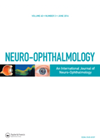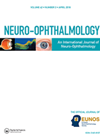
Journal Reviews
Systematic review on vergence neural pathways
A full systematic review of the literature was carried out by the authors, to identify literature available on vergence neural pathways and associated disorders. The review included articles related to vergence neural pathways, along with articles that discussed the anatomy,...
A case report of bidirectional aberrant upward eye movement
The authors present a case report of a 14-year-old boy with left ptosis and strabismus since childhood. In primary position he had left hypotropia with ptosis. On elevation of the right eye, the left eye depresses and adducts. Conversely, on...






